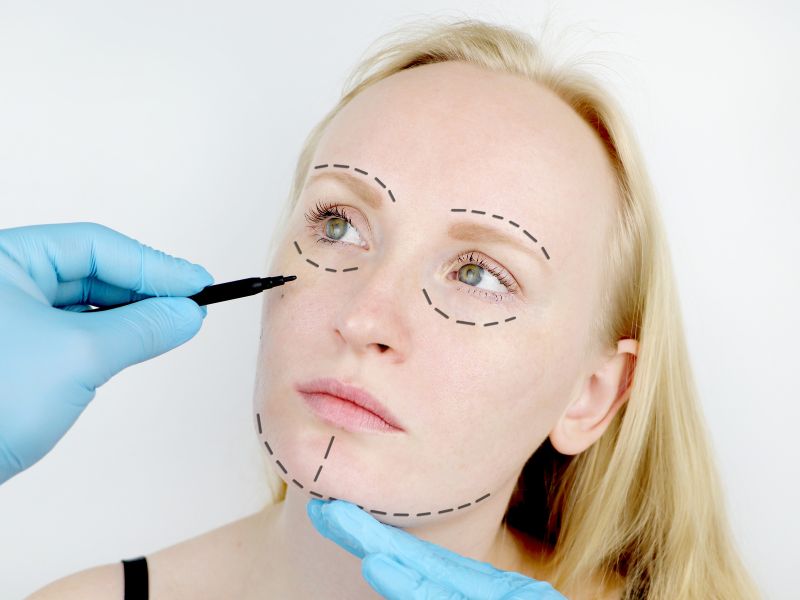Choosing to get a facelift can be a life-changing decision, as it can help you regain a younger and more vibrant appearance.
According to statistics, there were 448,485 facelifts performed globally in 2019 alone. But even though facelifts have become popular recently, if you opt for one, you need to be aware that the recovery process can have a significant impact on the final result. For that reason, it is necessary to have a deep comprehension of the different stages of recovery.
In other words, if you decide to undergo a facelift, you should prepare well in advance and have realistic expectations. Below, we will outline the various stages of recovery after a facelift, offering insights into what to expect during each phase and how to ensure a smooth healing process.

Immediate Post-Operative Phase
The immediate post-operative phase begins right after the facelift surgery and typically lasts for the first few days. During this stage, patients will experience swelling, bruising, and some discomfort. It’s important to follow all post-op protocols your surgeon provides to minimize potential complications and ensure a successful recovery.
For that reason, it is imperative to entrust this phase to the expert guidance of top facelift surgeons. Choosing a highly skilled and experienced surgeon specializing in facelift procedures can significantly impact the success of your surgery and the subsequent recovery process.
They have a comprehensive understanding of the intricacies of facelift recovery and will provide you with detailed post-operative instructions tailored to your unique needs. These instructions include keeping your head elevated, using cold compresses to reduce swelling, taking prescribed pain medication, and avoiding strenuous activities.
Early Recovery Phase
The immediate post-operative phase is followed by the early recovery phase, which lasts for about two weeks on average. Swelling and bruising are still visible at this point but are beginning to lessen. At this stage, proper wound healing depends on proper incision care, and your surgeon will give you instructions on how to clean and take care of the incision sites.
Additionally, experts advise scar management strategies like the application of silicone creams or sheets to lessen their appearance. Do your best to avoid bending over or doing any heavy lifting. These actions can increase blood flow to the face and delay healing.
Mid-Recovery Phase
Approximately two to six weeks after the facelift procedure, the mid-recovery phase begins. As bruising and swelling continue to subside, your facial appearance will start to improve. It’s crucial to keep in mind that the final results might not be entirely apparent just yet.
Your surgeon might permit you to gradually resume light exercise and facial massages at this point in order to increase circulation and expedite the healing process. During this time, it’s crucial to have patience and avoid expecting big changes right away.
Related Posts
Late Recovery Phase
Around six weeks after the facelift procedure, the late recovery phase starts and can last for several months. By this time, the majority of the swelling and bruising should have gone down, and you’ll start to see your facelift’s final results.
You will appear youthful, and any lingering swelling will continue to go down gradually. You can start doing more demanding activities, like intense exercise, but you must first speak with your facelift surgeon to make sure they are safe for you.
It’s important to maintain a healthy lifestyle, protect your skin from sun exposure with sunscreen and sunblock, and follow your surgeon’s instructions for long-term care to maintain the results of your facelift.

Potential Complications and Signs You Need Medical Attention
Despite the fact that there is typically a low risk of complications following facelift surgery, anything can happen while the patient is recovering. It is critical to be aware of the signs and symptoms of these complications and to seek medical help when necessary.
Complications can manifest in a variety of ways, including excessive bleeding, infection, excruciating pain, persistent swelling, or any other unusual sensations. After the procedure, your surgeon will provide you with very specific instructions on how and when to get in touch with them with any worries or queries you may have.
Final Thoughts
It takes time, commitment to post-operative instructions, and reasonable expectations to recover from a facelift. You can navigate the healing process more effectively if you are aware of the various phases of recovery and what to anticipate during each stage. Keep in mind that every patient’s recovery can be different, so it’s important to speak with your surgeon for specific advice.
Take care of yourself, adhere to your surgeon’s instructions, and accept the positive effects that a skillfully performed facelift can have on your life. A successful facelift recovery can result in a more youthful and assured version of yourself.





An insightful breakdown of the stages of recovery after a facelift! Understanding the process is key for anyone considering cosmetic surgery.